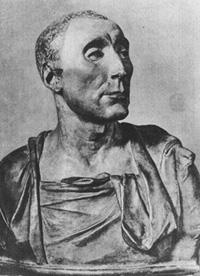 On this day in 1466, acclaimed Italian sculptor, Donatello, died in Florence, Italy at the age of 80. Born Donato di Niccolò di Betto Bardi c. 1386 in Florence, Italy. One of the most important Renaissance sculptors, known for his work in bas-relief, a form of shallow relief sculpture that, in Donatello’s case, incorporated significant 15th century developments in perspectival illusionism. His main works include:
On this day in 1466, acclaimed Italian sculptor, Donatello, died in Florence, Italy at the age of 80. Born Donato di Niccolò di Betto Bardi c. 1386 in Florence, Italy. One of the most important Renaissance sculptors, known for his work in bas-relief, a form of shallow relief sculpture that, in Donatello’s case, incorporated significant 15th century developments in perspectival illusionism. His main works include:
- “St. Mark” (1411–1413), Orsanmichele, Florence
- St. George Tabernacle (c. 1415–1417) — Museo Nazionale del Bargello, Florence
- “Prophet Habacuc” (1423–1425) — Museo dell’Opera del Duomo, Florence
- “The Feast of Herod” (c. 1425) — Baptismal font, Duomo di Siena
- “David” (c. 1425–1430) — Museo Nazionale del Bargello, Florence
- “Equestrian Monument of Gattamelata” (1445–1450) — Piazza del Santo, Padua
- “Magdalene Penitent” (c. 1455) — Museo dell’Opera del Duomo, Florence
- “Judith and Holofernes” (1455–1460) — Palazzo Vecchio, Florence
- “Virgin and Child with Four Angels” or “Chellini Madonna” (1456), Victoria and Albert Museum
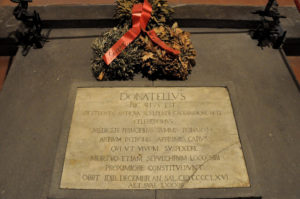 The Final Footprint – Donatello is entombed next to Cosimo de’ Medici the Elder in the Basilica di San Lorenzo (Basilica of St Lawrence), one of the largest churches of Florence, Italy, situated at the centre of the city’s main market district, and the burial place of all the principal members of the Medici family from Cosimo il Vecchio to Cosimo III.
The Final Footprint – Donatello is entombed next to Cosimo de’ Medici the Elder in the Basilica di San Lorenzo (Basilica of St Lawrence), one of the largest churches of Florence, Italy, situated at the centre of the city’s main market district, and the burial place of all the principal members of the Medici family from Cosimo il Vecchio to Cosimo III.
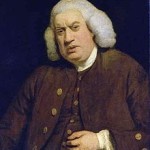 On this day in 1784, poet, essayist, moralist, literary critic, biographer, editor and lexicographer, Dr. Johnson, Samuel Johnson died at a friends house in Islington, London at the age of 75. Possibly the most distinguished man of letters in English history. He is also the subject of one of the most famous single works of biographical art in the whole of literature: James Boswell‘s Life of Samuel Johnson. Johnson married Elizabeth “Tetty” or “Testsey” Jervis Porter (1735 – 1752 her death). They married on 9 July 1735 at St. Werburgh’s Church, Derby, where the event is reenacted annually. Johnson called the marriage “a love-match on both sides,” and always recalled her affectionately and with grief, especially on the anniversary of her death. Born on 18 September 1709 in the family home above his father’s bookshop in Lichfield, Staffordshire.
On this day in 1784, poet, essayist, moralist, literary critic, biographer, editor and lexicographer, Dr. Johnson, Samuel Johnson died at a friends house in Islington, London at the age of 75. Possibly the most distinguished man of letters in English history. He is also the subject of one of the most famous single works of biographical art in the whole of literature: James Boswell‘s Life of Samuel Johnson. Johnson married Elizabeth “Tetty” or “Testsey” Jervis Porter (1735 – 1752 her death). They married on 9 July 1735 at St. Werburgh’s Church, Derby, where the event is reenacted annually. Johnson called the marriage “a love-match on both sides,” and always recalled her affectionately and with grief, especially on the anniversary of her death. Born on 18 September 1709 in the family home above his father’s bookshop in Lichfield, Staffordshire.
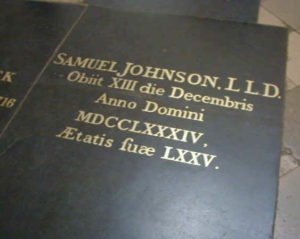 The Final Footprint – Johnson was buried on 20 December 1784 at Westminster Abbey. Other notable Final Footprints at Westminster include; Robert Browning, Lord Byron, Geoffrey Chaucer, Oliver Cromwell, Charles Darwin, Charles Dickens, Edward The Confessor, Elizabeth I, George II, George Friederic Handel, Stephen Hawking, James I (James VI of Scotland), Ben Jonson, Charles II, Edward III, Edward VI, Henry III, Henry V, Henry VII, Richard II, Rudyard Kipling, Henry Wadsworth Longfellow, John Milton, Sir Isaac Newton, Laurence Olivier, Henry Purcell, Mary I, Mary II, Mary Queen of Scots, Thomas Shadwell, Lord Alfred Tennyson, Dylan Thomas, and William III.
The Final Footprint – Johnson was buried on 20 December 1784 at Westminster Abbey. Other notable Final Footprints at Westminster include; Robert Browning, Lord Byron, Geoffrey Chaucer, Oliver Cromwell, Charles Darwin, Charles Dickens, Edward The Confessor, Elizabeth I, George II, George Friederic Handel, Stephen Hawking, James I (James VI of Scotland), Ben Jonson, Charles II, Edward III, Edward VI, Henry III, Henry V, Henry VII, Richard II, Rudyard Kipling, Henry Wadsworth Longfellow, John Milton, Sir Isaac Newton, Laurence Olivier, Henry Purcell, Mary I, Mary II, Mary Queen of Scots, Thomas Shadwell, Lord Alfred Tennyson, Dylan Thomas, and William III.
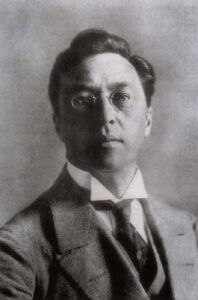 On this day in 1944 painter and art theorist Wassily Kandinsky died in Neuilly-sur-Seine, France, aged 77. Born Wassily Wassilyevich Kandinsky in Moscow on 16 December 1866.
On this day in 1944 painter and art theorist Wassily Kandinsky died in Neuilly-sur-Seine, France, aged 77. Born Wassily Wassilyevich Kandinsky in Moscow on 16 December 1866.
Kandinsky is generally credited as one of the pioneers of abstraction in western art, possibly after Hilma af Klint. He spent his childhood in Odessa, where he graduated at Grekov Odessa Art School. He enrolled at the University of Moscow, studying law and economics. Successful in his profession—he was offered a professorship (chair of Roman Law) at the University of Dorpat (today Tartu, Estonia)—Kandinsky began painting studies (life-drawing, sketching and anatomy) at the age of 30.
In 1896, Kandinsky settled in Munich, studying first at Anton Ažbe’s private school and then at the Academy of Fine Arts. He returned to Moscow in 1914, after the outbreak of World War I. Following the Russian Revolution, Kandinsky “became an insider in the cultural administration of Anatoly Lunacharsky” and helped establish the Museum of the Culture of Painting. However, by then “his spiritual outlook… was foreign to the argumentative materialism of Soviet society”, and opportunities beckoned in Germany, to which he returned in 1920. There he taught at the Bauhaus school of art and architecture from 1922 until the Nazis closed it in 1933. He then moved to France, where he lived for the rest of his life, becoming a French citizen in 1939 and producing some of his most prominent art.
The Final Footprint
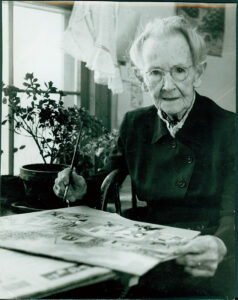 On this day in 1961 folk artist Grandma Moses died at the Health Center in Hoosick Falls, New York, aged 101. Born Anna Mary Robertson in Greenwich, New York on September 7, 1860.
On this day in 1961 folk artist Grandma Moses died at the Health Center in Hoosick Falls, New York, aged 101. Born Anna Mary Robertson in Greenwich, New York on September 7, 1860.
She began painting in earnest at the age of 78 and is a prominent example of a newly successful art career at an advanced age. Her works have been shown and sold worldwide, including in museums, and have been merchandised such as on greeting cards.
Moses appeared on magazine covers, television, and in a biographical documentary. Her autobiography is My Life’s History, she won numerous awards, and she held two honorary doctoral degrees.
The New York Times said: “The simple realism, nostalgic atmosphere and luminous color with which Grandma Moses portrayed simple farm life and rural countryside won her a wide following. She was able to capture the excitement of winter’s first snow, Thanksgiving preparations and the new, young green of oncoming spring… In person, Grandma Moses charmed wherever she went. A tiny, lively woman with mischievous gray eyes and a quick wit, she could be sharp-tongued with a sycophant and stern with an errant grandchild.”
She was a live-in housekeeper for a total of 15 years, starting at age 12. An employer noticed her appreciation for their prints made by Currier and Ives, and they supplied her with drawing materials. Moses and her husband began their married life in Virginia, where they worked on farms. In 1905, they returned to the Northeastern United States and settled in Eagle Bridge, New York. They had ten children, five of whom survived infancy. She embroidered pictures with yarn, until disabled by arthritis.
The Final Footprint
President John F. Kennedy memorialized her: “The death of Grandma Moses removed a beloved figure from American life. The directness and vividness of her paintings restored a primitive freshness to our perception of the American scene. Both her work and her life helped our nation renew its pioneer heritage and recall its roots in the countryside and on the frontier. All Americans mourn her loss.”[1] After her death, her work was exhibited in several large traveling exhibitions in the United States and abroad.
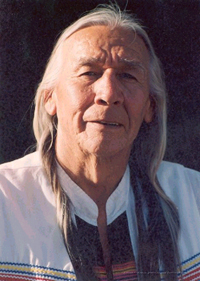 On this day in 2007, Sioux musician, political activist, and actor, Kanghi Duta (Red Crow in Dakota), Floyd Westerman died from complications of leukemia at Cedars-Sinai Medical Center in Los Angeles with his family, at the age of 71. Born on August 17, 1936 on the Lake Traverse Indian Reservation, home of the Sisseton Wahpeton Oyate, one of the tribes of the Eastern Dakota subgroup of the Great Sioux Nation, living within South Dakota. After establishing a career as a country music singer, he became a leading actor depicting Native Americans in American films and television. He worked as a political activist for Native American causes.
On this day in 2007, Sioux musician, political activist, and actor, Kanghi Duta (Red Crow in Dakota), Floyd Westerman died from complications of leukemia at Cedars-Sinai Medical Center in Los Angeles with his family, at the age of 71. Born on August 17, 1936 on the Lake Traverse Indian Reservation, home of the Sisseton Wahpeton Oyate, one of the tribes of the Eastern Dakota subgroup of the Great Sioux Nation, living within South Dakota. After establishing a career as a country music singer, he became a leading actor depicting Native Americans in American films and television. He worked as a political activist for Native American causes.
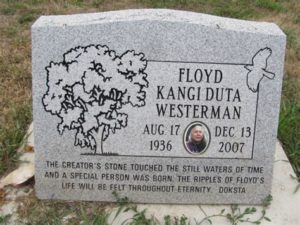 The Final Footprint
The Final Footprint
Saint Matthew Cemetery in Veblen, South Dakota.
Have you planned yours yet?
Follow TFF on twitter @RIPTFF


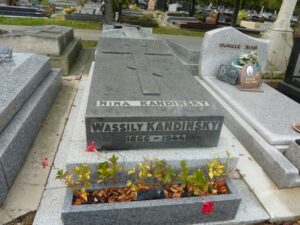
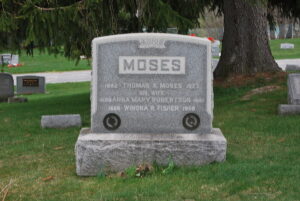

It’s great that you’ve taken the effort and time to assist those out there who are seeking out resources
on this subject. You have put in an tremendous amount of dedication into these solutions, and it has made it possible for individuals in our field to obtain great benefits.
Just know that this work means a lot to all of us.